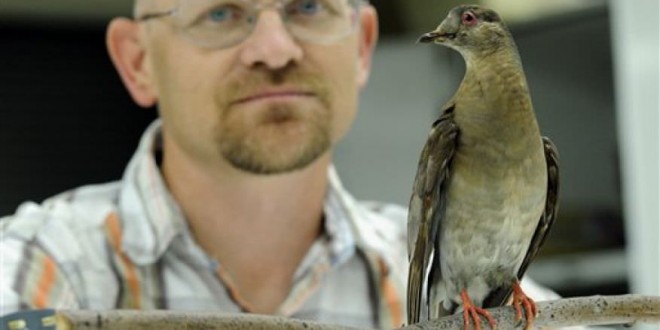Martha, the last surviving passenger pigeon, is being taken out of storage and being put on public display in a new Smithsonian Institution exhibit this month.
Revive & Restore is a non-profit organisation that aims to use genetics to “rescue” endangered and extinct species that went from billions to zero in just a few decades
The Great Passenger Pigeon Comeback is the first project by the organisation to attempt to revive an extinct animal using museum-specimen DNA – if successful the technique could be used to bring back hundreds of other extinct species.
“The goal … is to bring the passenger pigeon all the way back using the genome of the band-tailed pigeon and state-of-the-art genomic technology,” Revive & Restore said.
“The genomes of the two birds will be compared in close detail, to determine which differences are most crucial. The data and analysis will begin with the process of converting viable band-tailed DNA into viable passenger pigeon DNA.”
The passenger pigeon was chosen because they were hunted to extinction by humans in the early 1900s. It was one of the most abundant species in the world, with one flock spotted in Ontario in 1866 taking 14 hours to pass.
Some estimate 3 to 5 billion Passenger Pigeons were in the United States when Europeans arrived in North America.
When picking a species, the organisation said the de-extinction of the passenger pigeon was a “model species” at the “optimal middle ground of ease and difficulty”.
“An extinct mouse would be an easy win for de-extinction, but it does not challenge us to produce the methods necessary to revive birds or reptiles,” they said.
Experts have analysed the DNA of 12 passenger pigeons to try to assemble the full genomic code and are now looking for the most viable full genome sequencing candidate.
“We are now initiating research designs for the isolation and culturing of band-tailed pigeon primordial germ cells, which are necessary to perform the genome engineering to create passenger pigeons.
Agencies/Canadajournal
 Canada Journal – News of the World Articles and videos to bring you the biggest Canadian news stories from across the country every day
Canada Journal – News of the World Articles and videos to bring you the biggest Canadian news stories from across the country every day



